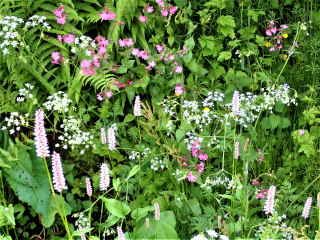
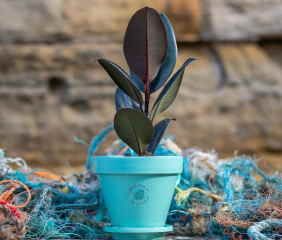

10 Top tips for Sustainable gardening
What is sustainable gardening?
We are now focussed on climate crisis and as individuals; we are more aware that our decisions and choices make a difference.
Inevitably, there will be many views on this issue. This is simply my personal take.
Sustainable gardening is about consuming less, preserving nature and our resources, and enhancing the environment. In our gardening habits, just as in any other of our lives, there is much we can do to reduce our carbon footprint.
One definition of "husbandry" is the management and conservation of resources
I hope these ideas inspire you.
Practise water conservation by Smart watering
Gardeners and gardens consume water, which is precious and expensive. As our gardens suffer more drought, we need more water;catching and reusing is the best way.
Fitting a water butt is a quick fix and one or two around the house gutters will store a good amount of water suitable for the average garden.
You can also "Water wisely" so that we use our water economically, such as watering to the roots, see image. Of the plant, it is the roots which most need water. Tips about smart watering.
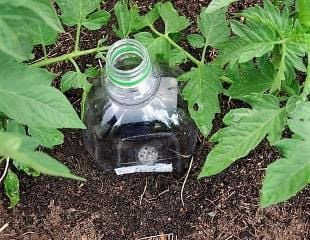
Grow Hedges Instead of Fences
Hedges have so much going for them. They are home to wildlife, many insects and birds. Have you ever walked past a hedge in an urban area and discovered it to be a "Sparrow Hedge" where they all congregate and twitter in and out of the hedge? What a sight!
Hedges provide insulation, help to reduce flooding and noise. We now know thanks to research by the RHS that hedges reduced pollution, and some more than others.
Here are the 10 best hedging shrubs for wildlife and to reduce pollution.

Water Butts Make A Difference
Fitting a water butt is a quick fix and one or two around the house gutters will store a good amount of water suitable for the average garden. It is estimated that 24,000 lites of rain will hit the average roof each year, a free garden resource.
Also rainwater is better for the garden. It is chlorine and sodium free and usually has a lower pH.
In addition, when we experience heavy rainfall, a water butt delays the rain flowing out into the garden to slow down flooding. You can get slow release water butts which then release the water over a period, reducing the flood risk. It is worth checking with your local authority as many authorities are supplying slow release water butts for free to their residents.

Consume less and recycle
Everything you buy has a carbon cost as well as a price tag.
Gardeners are an imaginative bunch of people who will fashion pots out of toilet rolls, and use old yogurt trays.
You can use old bits of sack to make a shade structure, and old socks to wrap up pots in the winter.
It is easy to make plant supports from offcuts and prunings supple cornus and willow will make circular supports.
We can reuse even a plastic bag, many times,) to make a homemade propagator . Re use sprays as plant misters and have a look at 10 best money-saving tips has ideas on how to consume less and re use more.
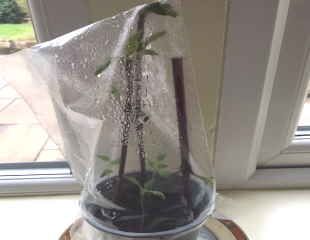
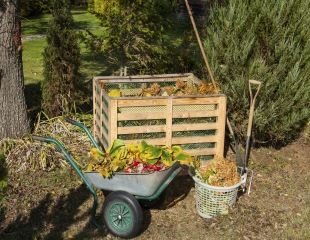
Compost Your Garden Waste
Making your own compost lightens the carbon footprint. Researches at RHS have come up with some useful statics about compost making:
“Carbon saving quantities linked to home composting (as opposed to buying bagged retail compost) are equivalent to 1.85 miles (driven by average car) saved per kg of home compost made.Every 1kg of homemade compost saves 0.1kg fossil carbon, which could save more than 15 - 19kg carbon, per gardener, per year.” So worth a try.
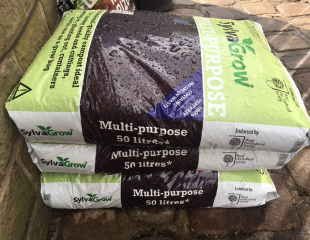
Go peat free
Making your own compost may not be practical. It is not always that easy; you need space for the bin and the right place to put it.
Peat is a natural product. It occurs in bogs and wetlands and it grows slowly, taking a long time to form, and very little time to cut and use.
Apart from providing a natural habitat for wildlife, peat absorbs and holds carbon. When peat is harvested for commercial use, the habitat destroyed and the carbon released back into the environment, by consensus it is time this was stopped.
What is peat free compost and how to use it?
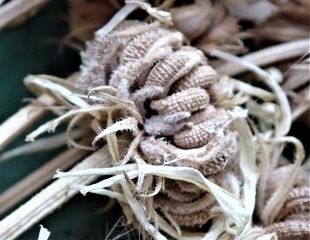
Saving seed: the earliest form of recycling
Saving seeds, once an extensive skill common to all gardeners, is one of the oldest ways of saving resources.
It is not really practical for today's gardens to grow almost everything from their own saved seed, but as we know, small steps make a difference, so saving some seed saves some resources.
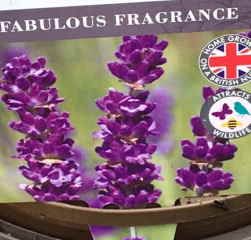
Check the provenance of what you are Buying
There was a time when garden centres were local nurseries and plants were grown and raised on the premises and then sold on. It is hard now to find locally raised plants, and so many of our plants come from Holland and further a field.
It is worth searching to find a family run business, or internet a supplier who grows their own plants. The next best step is to look for plants grown in the UK.
Business models for garden centres are changing and there are sustainable garden centres. The Edible culture garden centre is a great example of what we can do. We would all like to live in Kent! It offers plastic free plants pots, peat free compost sold in bags for life, natural feeds sold loose in scoops, seed sold loose, home-grown plants and a great range, a shining example of all things good and green.
Business like edible cultures are few and far between, but we can still make informed choices when buying and check out some of the carbon issues first.
Sustainable innovation in the gardening world
The Chelsea Flower show this year, (and for the first time,) had some green awards and Ocean Plastic Pots won The RHS Chelsea Flower Show Sustainable Garden Product of the Year Award 2021.
They made their product from waste fishing gear to reuse it and preventing it becoming landfill or pollution.

Preserving and enhancing the environment.
One of the most popular areas on The Sunday Gardener website is areas of wildlife friendly gardening. We can plant for wildlife, create havens for birds, bees, butterflies and all our garden visitors.
An important part of this is reducing or eliminating pesticides and the use of garden chemical.
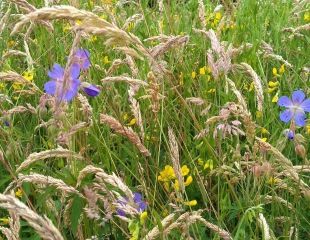
Your garden can be a haven for wildlife. Here is some food for thought:
Install a pond so important for wildlife
Less hard landscaping and more natural materials, such as bark paths
Have you room for a tree ?– or fund the National Trust tree planting scheme
Grow your own veg is a win-win – organic veg,with no air miles
home-grown flowers as many flowers sold commercially have been imported many miles
Ideas to protect and enhance our environment, making our gardens green corridors.
